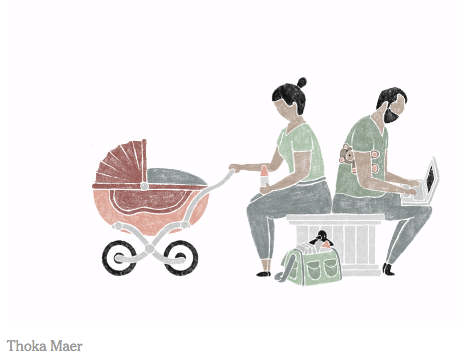start working, they’re paid pretty much equally. But a gender pay gap soon appears, and it grows significantly over the next two decades.
So what changes? The answer can be found by looking at when the pay gap widens most sharply. It’s the late 20s to mid-30s, according to two new studies — in other words, when many women have children. Unmarried women without children continue to earn closer to what men do.
The big reason that having children, and even marrying in the first place, hurts women’s pay relative to men’s is that the division of labor at home is still unequal, even when both spouses work full time. That’s especially true for college-educated women in high-earning occupations: Children are particularly damaging to their careers.
. . .
According to the data, Ms. Kerr said, college-educated women make about 90 percent as much as men at age 25 and about 55 percent as much at age 45.
The new working paper, which covered the broadest group of people over time, found that between ages 25 and 45, the gender pay gap for college graduates, which starts close to zero, widens by 55 percentage points. For those without college degrees, it widens by 28 percentage points.
Much of that happens early in people’s careers, during women’s childbearing years. The American Economic Review paper, which examined people born around 1970, found that almost all of the pay gap for college graduates came from ages 26 to 33.
Read full article




